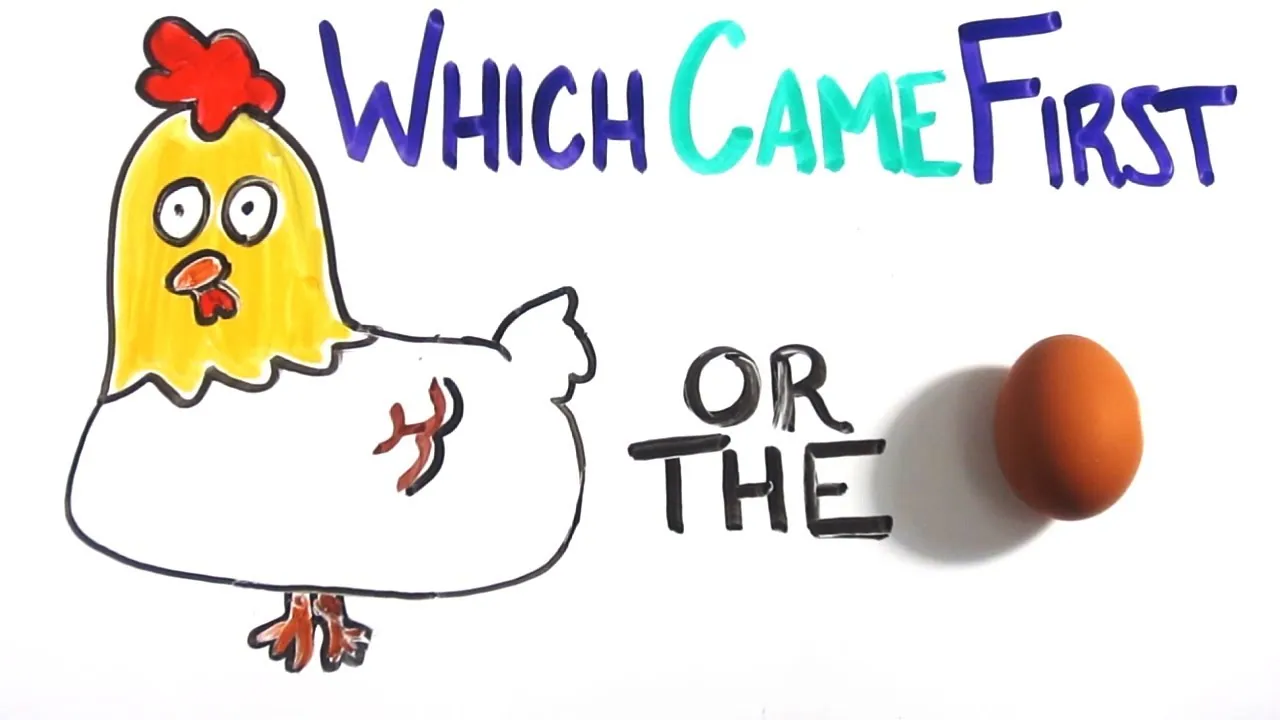This article isn’t just about solving an age-old riddle; it’s about celebrating the wondrous story of evolution and the amazing adaptations that led to the creatures we know today – chickens and their eggs!
Unveiling the Mystery: A Timeline of Eggs and Chickens
The answer to the chicken-or-egg question might surprise you! Here’s a captivating timeline that reveals the incredible journey:
- Millions of Years Ago: Eggs existed well before chickens! Fossil records show that dinosaur eggs, laid over 190 million years ago, predate the existence of chickens by a vast amount of time. These early eggs contained embryos that would hatch into dinosaurs, not chickens.
- The Rise of Feathered Theropods: Around 150 million years ago, a group of theropod dinosaurs began evolving feathers and other bird-like characteristics. These feathered ancestors of chickens laid eggs that contained embryos with some features similar to early birds.
- The Birth of Chickens: Over millions of years, these feathered theropods continued to evolve. A specific mutation in one of these ancestral birds led to the development of the very first true chicken! This first chicken hatched from an egg laid by its non-chicken ancestor.
Eggs Came First, But Not Quite a Chicken Egg!
So, while eggs definitely came first, the very first chicken didn’t hatch from a chicken egg in the strictest sense. It hatched from an egg laid by a very close bird-like ancestor that wasn’t quite a chicken yet.
The Egg’s Evolutionary Marvel: A Perfect Incubator
Eggs are truly remarkable feats of evolution. They provide a safe haven for developing embryos, containing all the nutrients needed for a chick to grow. Eggshells are strong yet breathable, allowing oxygen to reach the embryo while protecting it from harm.
Here are some of the amazing features of eggs:
- A Protective Shell: The eggshell is made of calcium carbonate, providing a strong barrier against the environment. Tiny pores in the shell allow oxygen to enter and carbon dioxide to exit.
- A Nourishing Yolk: The yolk is a rich source of protein and fat, providing essential nutrients for the developing chick.
- The Albumen (Egg White): The albumen protects the yolk and provides additional protein and water for the chick.
- The Amniotic Sac: This fluid-filled sac surrounds the embryo, cushioning it and preventing dehydration.
- The Allantois: This structure helps with gas exchange and waste removal within the egg.
Eggs are truly marvels of nature, and their existence long predates the evolution of chickens.
The Legacy of Eggs and Chickens: A Story of Interdependence
The story of eggs and chickens is a beautiful example of interdependence in nature. Chickens rely on eggs for reproduction, and eggs rely on chickens for development. This elegant cycle has ensured the survival of both for millions of years.
Beyond the Riddle: Celebrating the Wonder of Life
The question of “which came first” is a fun thought experiment, but the true wonder lies in the incredible journey of evolution that led to eggs and chickens. From the humble beginnings of dinosaur eggs to the marvels of modern chicken reproduction, this story is a testament to the remarkable diversity and resilience of life on Earth.
This article has hopefully sparked your curiosity about the natural world. So next time you enjoy a delicious egg or witness a fluffy chick hatch, remember the fascinating evolutionary story behind these everyday miracles!
Beyond the Basics: Exploring the Nuances of Egg Evolution
While we’ve established that eggs existed well before chickens, the story of egg evolution goes beyond a simple timeline. Here are some intriguing aspects to delve deeper into:
- The Protein Puzzle: Scientists believe a specific genetic mutation led to the development of the first true chicken. This mutation likely involved a protein called collagen type XI, which plays a crucial role in eggshell formation. Understanding this mutation can provide deeper insights into the evolutionary leap from non-chicken ancestors to chickens.
- The Diversity of Eggs: Not all eggs are created equal! Bird eggs come in a wide variety of shapes, sizes, colors, and patterns. These variations can tell us about the nesting habits, camouflage strategies, and evolutionary adaptations of different bird species. For example, the brown speckled pattern of a chicken egg helps camouflage it in a natural environment.
- The Miracle of Development: The process of chick development within an egg is nothing short of miraculous. A fertilized egg undergoes a series of complex stages, transforming a single cell into a fully formed chick within a relatively short period. Studying embryonic development can shed light on the early stages of life and the incredible potential encoded within an egg.
- The Debate Continues: While there’s a strong scientific consensus that eggs predate chickens, some argue for a more nuanced view. The exact definition of a “chicken egg” and the ongoing process of egg evolution leave room for ongoing scientific exploration and debate.
These complexities highlight the fascinating world of evolutionary biology and the ongoing quest to understand the intricate details of life’s origins.
The Egg and Us: A Connection Across Time
Eggs are not just a source of food for humans; they hold a special place in our history and culture. Here are some ways eggs have intertwined with human existence:
- A Symbol of New Life: In many cultures, eggs symbolize fertility, new beginnings, and the circle of life. This symbolism is evident in various cultural traditions and celebrations around the world.
- A Culinary Canvas: Eggs are a versatile ingredient used in countless cuisines across the globe. From breakfast staples like omelets to decadent desserts, eggs offer a delicious and nutritious food source.
- A Window into the Past: Eggshells are remarkably well-preserved in archaeological digs. Studying fossilized eggs can provide valuable insights into the diets, behavior, and even the environment of prehistoric creatures.
Eggs are more than just a biological marvel; they connect us to our past, nourish our bodies, and inspire our creativity.
Conclusion: A Celebration of Curiosity and Discovery
The question of “what came first, the chicken or the egg?” may seem like a simple riddle, but it sparks a deeper curiosity about the wonders of evolution and the interconnectedness of life on Earth. By exploring the science behind eggs and chickens, we gain a profound appreciation for the remarkable journey that led to these everyday wonders.
So next time you encounter an egg, remember the incredible story it embodies. It’s a testament to the power of evolution, a symbol of new beginnings, and a delicious part of our culinary world. Let this be a starting point for your own exploration of the natural world, filled with countless mysteries waiting to be unraveled.

